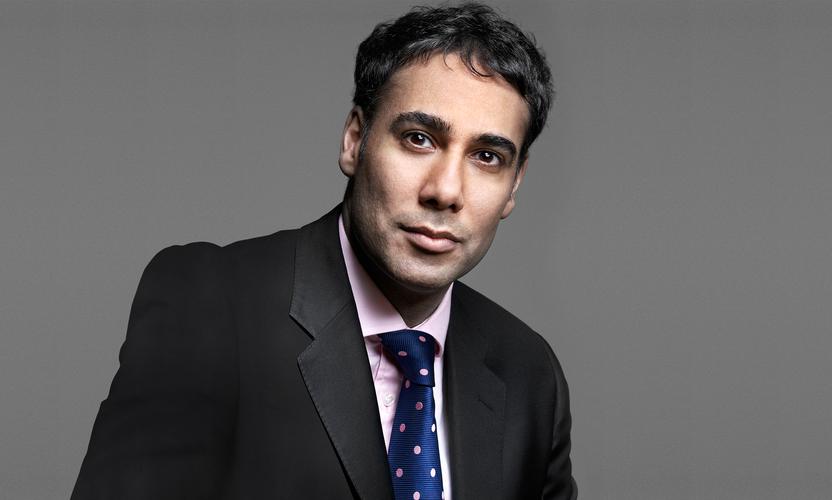A tipping point
Reality bit the markets last week. It took a global health emergency triggered by the Covid-19 outbreak to rile risk-asset prices that had otherwise shrugged off trade wars, fractious politics and air pockets in market liquidity.
But investors should not fear a short-term selloff - even a significant one - in reaction to the outbreak. Instead, the more daunting prospect is that we’ve reached a different sort of tipping point. The recent decline is the first sign that the traditional playbook may have stopped working, and that policy intervention and adding further liquidity may no longer be enough to prolong an extended cycle of market returns and economic expansion.
A rotation in leadership?
The bigger fear here involves a series of underlying trends which feel exhausted from a returns perspective, but that still hold sway over the popular narrative. These include the preference for passive strategies over active, the belief that returns from private markets will be superior, and the notion that policy rates will be low for the coming decade. Unraveling these would mark nothing less than a paradigm shift. Investors should rightfully fear a meaningful rotation in markets where the widely believed sources of outsized returns are called into question and the under-loved and under-owned parts of the market are reassessed.
And this is where it’s worth considering how Billy Beane might handicap these markets. Anyone who saw the movie or read the book Moneyball will know that Beane’s secret for success in using a shoestring budget to build a powerhouse out of the Oakland A’s baseball team was to identify value where others had overlooked it, and to profit by identifying fallacies in the conventional wisdom. What might that mean in the context of the current market? Let’s consider a couple of examples.
Testing liquidity
First, liquidity. In recent years, capital that defines itself as long-term has been keen to earn a ‘liquidity premium’ by investing in relatively less-liquid assets such as direct real estate, private equity and other alternative asset classes. Many of these have been pitched on the basis of offering stable absolute returns over a longer time horizon. But in many cases this is a function of how the assets are priced versus true underlying volatility. What happens if we enter an environment where investors become liquidity seeking - and are willing to take a haircut for the privilege exiting their positions? Only then will the true patience of this long-term capital be tested.
The passive push
Second, factor-based volatility strategies. We’ve had a prolonged period where asset class selection and style have explained the largest part of returns, so it is understandable that we have ended up with a revival in the popularity of factor investing - including strategies that seek to achieve low-volatility outcomes. However, such strategies are particularly vulnerable in periods of rotation in markets, as past behaviour of securities becomes a poor guide to the future. The scale of assets that have been deployed into factor strategies should, therefore, be a cause for concern.
Moneyball and bias
So how do investors brace themselves for this rotation? Billy Beane’s now famous Moneyball techniques involved using unconventional data to find discarded players that could deliver outstanding results by leaning against the underlying prejudices in baseball. Similarly, the prejudices influencing markets can swing around markedly, with the prospects for future returns being lost in the shade of these overarching preferences. In both cases, it pays to look more closely.
A more engaged ESG approach
I am a passionate advocate of investors considering the extent to which individual companies are run with an eye on their broader stakeholders and investment strategies. This is the foreground to any approach looking at environmental, social and governance (ESG) characteristics. However, most of the investment strategies that we have seen so far, be they active or passive, have been centred on simple exclusion of ‘poor’ ESG sectors or issuers. In an environment of abundant asset price returns, the ‘cost’ of this exclusion has been low. However, this becomes more of an issue when the outlook for returns deteriorates. Investors need to be more discerning. The growth of largely two-dimensional ESG strategies have led to a set of ‘discarded’ issuers whose potential value has been subordinated to the overarching biases in the markets.
Choose your volatility
Similarly, the bias against stocks with a higher degree of underlying volatility has become in its own way a self-fulfilling one. Simply put, nothing creates price stability or volatility more than the extent to which capital flows toward and away from a given security. Volatility-focused strategies have perhaps exacerbated this dynamic. No doubt this has led to series of viscous spirals, and again, a group of unpopular and ‘undesirable’ investments. But do fundamentals argue for a different valuation?
Inefficiencies like these are precisely why investors should not fear a significant sell-off in markets. For most of the last decade, the marginal dollar has sought investment strategies that aim to preserve capital, avoid volatility or attach to popular themes such as disruptive technology or ESG. Additionally, the decreasing breadth in markets in recent years, particularly in listed equities, means that fewer areas within the market have demonstrated outsized returns.
In a market which is flashing signs of uncertainty, longer term investors should worry less about the near term downside and more about a material change in the pattern of leadership. As the challenge of delivering returns becomes greater, don’t follow the well-worn playbook, think how Billy Beane would respond.








































